
The population of Chad has numerous ethnic groups. SIL Ethnologue reports more than 130 distinct languages spoken in Chad. [1]

The population of Chad has numerous ethnic groups. SIL Ethnologue reports more than 130 distinct languages spoken in Chad. [1]
The 14 million Chad people belong to some 200 ethnicities, who speak numerous languages. [2] The peoples of Chad carry significant ancestry from Eastern, Central, Western, and Northern Africa. [3] The population can be broadly divided between those in the east, north and west who follow Islam, and the peoples of the south, the five southernmost prefectures, who are mostly Christian or animist. The southern part of the country was historically the cross roads of the caravan routes below the Sahara, forming a link between West Africa and the Arabic region, as well as one between North Africa and sub-Saharan Africa. [2] The slave trade between sub-Saharan Africa and the Middle East passed through the slave markets of Chad and Western Sudan, slave-trading was a key component of Chad's historic economy, [4] and this brought people of various ethnicities into Chad. [5] The CIA Factbook estimates the largest ethnic groups as of the 2014-2015 census as: [6]
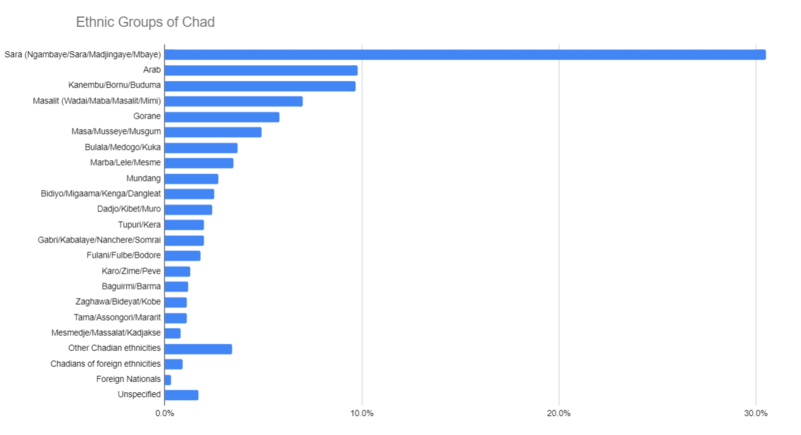
| Groups | Percentage |
|---|---|
| Sara (Ngambaye/Sara/Madjingaye/Mbaye) | 15.5% |
| Arab | 15.8% |
| Kanembu/Bornu/Buduma | 10.3% |
| Masalit people (Wadai/Maba/Masalit/Mimi) | 5.0% |
| Gorane | 8.8% |
| Bulala/Medogo/Kuka | 3.7% |
| Marba/Lele/Mesme | 3.5% |
| Mundang | 2.7% |
| Bidiyo/Migaama/Kenga/Dangleat | 2.5% |
| Dadjo/Kibet/Muro | 2.4% |
| Tupuri/Kera | 2.0% |
| Gabri/Kabalaye/Nanchere/Somrai | 2.0% |
| Fulani/Fulbe/Bodore | 1.8% |
| Karo/Zime/Peve | 1.3% |
| Baguirmi/Barma | 1.2% |
| Zaghawa/Bideyat/Kobe | 1.1% |
| Tama/Assongori/Mararit | 1.1% |
| Mesmedje/Massalat/Kadjakse | 0.8% |
| Other Chadian ethnicities | 3.4% |
| Chadians of foreign ethnicities | 0.9% |
| Foreign Nationals | 0.3% |
| Unspecified | 1.7% |
Other little-known ethnic groups believed to be living in Chad include the Kujarke people. [7]
Islamization began as early as the 8th century and was mostly complete by the 11th, when Islam became the official religion of the Kanem-Bornu Empire. The Shuwa established an economy of slave trade across the Sudan region, and in Chad there was a tradition of slave raids (ghazw) under the Ouaddai and Baguirmi which persisted well into the 20th century.
Muslim groups other than the Shuwa include the Toubou, Hadjerai, Fulbe/Fulani, Kotoko, Kanembou, Baguirmi, Boulala, Zaghawa, and Maba.
| | This section is empty. You can help by adding to it. (September 2021) |
Ethno-linguistically, the groups may be divided into:
Chad, officially the Republic of Chad, is a landlocked country in Central Africa. It borders Libya to the north, Sudan to the east, the Central African Republic to the south, Cameroon and Nigeria to the southwest, and Niger to the west. Due to its distance from the sea and its largely desert climate, the country is sometimes referred to as the "Dead Heart of Africa".
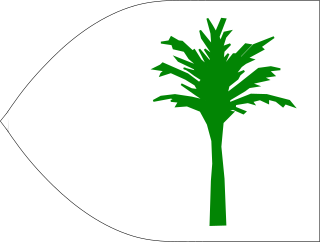
The Kanem–Bornu Empire existed in areas which are now part of Nigeria, Niger, Cameroon, Libya and Chad. It was known to the Arabian geographers as the Kanem Empire from the 8th century AD onward and lasted as the independent kingdom of Bornu until 1900.

The Nilo-Saharan languages are a proposed family of African languages spoken by somewhere around 70 million speakers, mainly in the upper parts of the Chari and Nile rivers, including historic Nubia, north of where the two tributaries of the Nile meet. The languages extend through 17 nations in the northern half of Africa: from Algeria to Benin in the west; from Libya to the Democratic Republic of the Congo in the centre; and from Egypt to Tanzania in the east.

The demographics of Sudan include the Sudanese people and their characteristics, Sudan, including population density, ethnicity, education level, health, economic status, religious affiliations, and other aspects of the population.
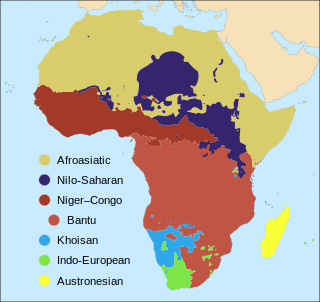
The number of languages natively spoken in Africa is variously estimated at between 1,250 and 2,100, and by some counts at over 3,000. Nigeria alone has over 500 languages, one of the greatest concentrations of linguistic diversity in the world. The languages of Africa belong to many distinct language families, among which the largest are:

Central Africa is a subregion of the African continent comprising various countries according to different definitions. Middle Africa is an analogous term used by the United Nations in its geoscheme for Africa and consists of the following countries: Angola, Burundi, Cameroon, Central African Republic, Chad, Democratic Republic of the Congo, Republic of the Congo, Equatorial Guinea, Gabon, Rwanda, and São Tomé and Príncipe. These eleven countries are members of the Economic Community of Central African States (ECCAS). Six of those countries are also members of the Economic and Monetary Community of Central Africa (CEMAC) and share a common currency, the Central African CFA franc.
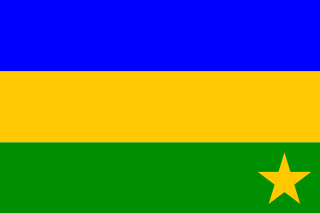
The Kanuri people are an African ethnic group living largely in the lands of the former Kanem and Bornu Empires in Niger, Nigeria, Chad, and Cameroon. As well as a diaspora community residing in Sudan. Those generally termed Kanuri include several subgroups and dialect groups, some of whom identify as distinct from the Kanuri. Most trace their origins to ruling lineages of the medieval Kanem-Bornu Empire, and its client states or provinces. In contrast to the neighboring Toubou or Zaghawa pastoralists, Kanuri groups have traditionally been sedentary, engaging in farming, fishing the Chad Basin, trade, and salt processing.
The Kujargé language is spoken in seven villages in eastern Chad near Jebel Mirra, and in villages scattered along the lower Wadi Salih and Wadi Azum in Darfur, Sudan. It is estimated to have about 1,000 speakers.

Daza is a Nilo-Saharan language spoken by the Daza people inhabiting northern Chad and eastern Niger. The Daza are also known as the Gouran (Gorane) in Chad. Dazaga is spoken by around 700,000 people, primarily in the Djurab Desert region and the Borkou region, locally called Haya or Faya-Largeau northern-central Chad, the capital of the Dazaga people. Dazaga is spoken in the Tibesti Mountains of Chad, in eastern Niger near N'guigmi and to the north. It is also spoken to a smaller extent in Libya and in Sudan, where there is a community of 3,000 speakers in the city of Omdurman. There's also a small diaspora community working in Jeddah, Saudi Arabia.
The Zaghawa people, also called Beri or Zakhawa, are an ethnic group primarily residing in southwestern Libya, northeastern Chad, and western Sudan, including Darfur.
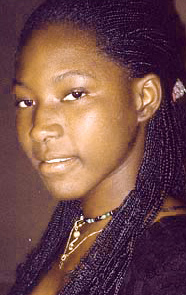
The Sara people are a Central Sudanic ethnic group native to southern Chad, the northwestern areas of the Central African Republic, and the southern border of North Sudan. They speak the Sara languages which are a part of the Central Sudanic language family. They are also the largest ethnic group in Chad.

The Toubou or Tubu are an ethnic group native to the Tibesti Mountains that inhabit the central Sahara in northern Chad, southern Libya, northeastern Niger and northwestern Sudan. They live either as herders and nomads or as farmers near oases. Their society is clan-based, with each clan having certain oases, pastures and wells.

Chad has two official languages, Arabic and French, and over 120 indigenous languages. A vernacular version of Arabic, Chadian Arabic, is a lingua franca and the language of commerce, spoken by 40–60% of the population. The two official languages have fewer speakers than Chadian Arabic. Standard Arabic is spoken by around 615,000 speakers. French is widely spoken in the main cities such as N'Djamena and by most men in the south of the country. Most schooling is in French. The language with the most first-language speakers is probably Ngambay, with around one million speakers.
The Maba, also called Bargo or Wadai people, are a Sunni Muslim ethnic group found primarily in the mountains of Wadai region in eastern Chad and southern Sudan. Their population is estimated to be about 542,000. Other estimates place the total number of Bargo people in Sudan to be about 28,000.

There are over 525 native languages spoken in Nigeria. The official language and most widely spoken lingua franca is English, which was the language of Colonial Nigeria. Nigerian Pidgin – an English-based creole – is spoken by over 60 million people.

Sudan is a multilingual country dominated by Sudanese Arabic. In the 2005 constitution of the Republic of Sudan, the official languages of Sudan are Literary Arabic and English.

Chadian Arabic, also known as Shuwa Arabic, Western Sudanic Arabic, or West Sudanic Arabic (WSA), is a variety of Arabic and the first language of 1.6 million people, both town dwellers and nomadic cattle herders. Most of its speakers live in central and southern Chad. Its range is an east-to-west oval in the Sahel. Nearly all of this territory is within Chad and Sudan. It is also spoken elsewhere in the vicinity of Lake Chad in the countries of Cameroon, Nigeria and Niger. Finally, it is spoken in slivers of the Central African Republic. In addition, this language serves as a lingua franca in much of the region. In most of its range, it is one of several local languages and often not among the major ones.

The Hausa are a native ethnic group in West Africa. They speak the Hausa language, which is the second most spoken language after Arabic in the Afro-Asiatic language family. The Hausa are a culturally homogeneous people based primarily in the Sahelian and the sparse savanna areas of southern Niger and northern Nigeria respectively, numbering around 86 million people, with significant populations in Benin, Cameroon, Ivory Coast, Chad, Central African Republic, Togo, Ghana, as well as smaller populations in Sudan, Eritrea, Equatorial Guinea, Gabon, Senegal, Gambia. Predominantly Hausa-speaking communities are scattered throughout West Africa and on the traditional Hajj route north and east traversing the Sahara, with an especially large population in and around the town of Agadez. Other Hausa have also moved to large coastal cities in the region such as Lagos, Port Harcourt, Accra, Abidjan, Banjul and Cotonou as well as to parts of North Africa such as Libya over the course of the last 500 years. The Hausa traditionally live in small villages as well as in precolonial towns and cities where they grow crops, raise livestock including cattle as well as engage in trade, both local and long distance across Africa. They speak the Hausa language, an Afro-Asiatic language of the Chadic group. The Hausa aristocracy had historically developed an equestrian based culture. Still a status symbol of the traditional nobility in Hausa society, the horse still features in the Eid day celebrations, known as Ranar Sallah. Daura is the cultural center of the Hausa people. The town predates all the other major Hausa towns in tradition and culture.